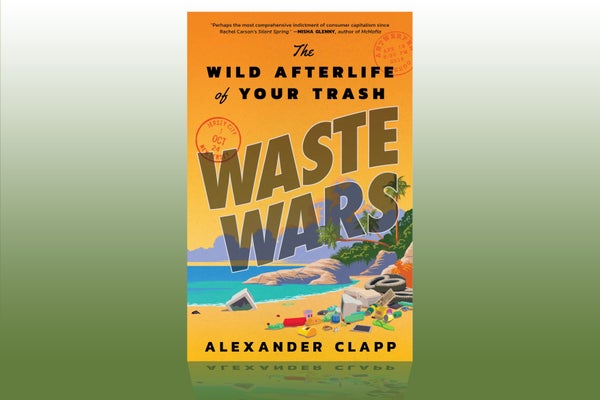
Alexander Clapp, author of new nonfiction book 'Waste Wars,' tracks the world-wide blackmarket trade of our garbage

Brianne Kane is the editorial workflow and rights manager at Scientific American.
html Brianne Kane; Andrea Gawrylewski 1752184800 ChatGPT Is Changing the Words We Use in Conversation https://www.scientificamerican.com/article/chatgpt-is-changing-the-words-we-use-in-conversation/Words frequently used by ChatGPT, including “delve” and “meticulous,” are getting more common in spoken language, according to an analysis of more than 700,000 hours of videos and podcasts

Just_Super/Getty Images
Vanessa Bates Ramirez is a science and technology journalist focused on energy and climate tech, artificial intelligence and biotechnology. Her work has appeared in Time magazine, Forbes, AI Frontiers, Scientific American and SingularityHub, among other outlets. Follow Ramirez on X @vanessabramirez
html Vanessa Bates Ramirez; Allison Parshall 1752184800 We’re Light-Years Away from True Artificial Intelligence, Says Murderbot Author Martha Wells https://www.scientificamerican.com/article/were-light-years-away-from-true-artificial-intelligence-says-murderbot/Today’s large language models are hardly related to the kinds of machine intelligence we see in science fiction, according to Martha Wells, author of the Murderbot Diaries series

Alexander Skarsgard in the Apple TV+ series Murderbot.
Album/Alamy Stock Photo
Clara Moskowitz is a senior editor at Scientific American, where she covers astronomy, space, physics and mathematics. She has been at Scientific American for a decade; previously she worked at Space.com. Moskowitz has reported live from rocket launches, space shuttle liftoffs and landings, suborbital spaceflight training, mountaintop observatories, and more. She has a bachelor's degree in astronomy and physics from Wesleyan University and a graduate degree in science communication from the University of California, Santa Cruz.
html Clara Moskowitz; Allison Parshall 1752184800 Marjorie Taylor Greene Plans Hearing on Geoengineering amid Cloud Seeding Conspiracy Theories https://www.scientificamerican.com/article/marjorie-taylor-greene-plans-hearing-on-geoengineering-amid-cloud-seeding/Republican Representative Marjorie Taylor Greene of Georgia has said she will hold a hearing on geoengineering as conspiracy theories have swirled around cloud seeding after the recent floods in Texas
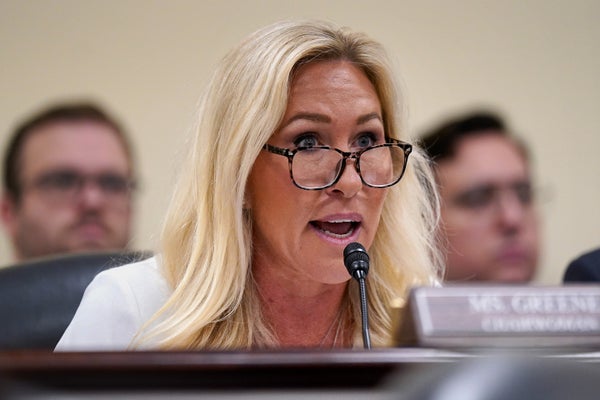
Chair of the Subcommittee on Delivering On Government Efficiency (DOGE) U.S. Rep. Marjorie Taylor Greene (R-SC) presides over a hearing of the House Oversight Subcommittee in the Rayburn House Office Building on February 12, 2025 in Washington, D.C.
Al Drago/Getty Images
Kevin Bogardus is a reporter at E&E News.
E&E News provides essential energy and environment news for professionals.
html Kevin Bogardus; E&E News 1752098400 Elon Musk's New Grok 4 Takes on ‘Humanity’s Last Exam’ as the AI Race Heats Up https://www.scientificamerican.com/article/elon-musks-new-grok-4-takes-on-humanitys-last-exam-as-the-ai-race-heats-up/Elon Musk has launched xAI’s Grok 4—calling it the “world’s smartest AI” and claiming it can ace Ph.D.-level exams and outpace rivals such as Google’s Gemini and OpenAI’s o3 on tough benchmarks

Floriana/Getty Images
Deni Ellis Béchard is Scientific American’s senior tech reporter. He is author of 10 books and has received a Commonwealth Writers’ Prize, a Midwest Book Award and a Nautilus Book Award for investigative journalism. He holds two master’s degrees in literature, as well as a master’s degree in biology from Harvard University. His most recent novel, We Are Dreams in the Eternal Machine, explores the ways that artificial intelligence could transform humanity. You can follow him on X, Instagram and Bluesky @denibechard.
html Deni Ellis Béchard; Dean Visser 1752098400 Ancient Tooth Proteins Rewrite the Rhino Family Tree—Are Dinosaurs Next? https://www.scientificamerican.com/article/ancient-tooth-proteins-rewrite-the-rhino-family-tree-are-dinosaurs-next/Molecules from the 20-million-year-old teeth of a rhino relative are among the oldest ever sequenced, opening tantalizing possibilities to scientists
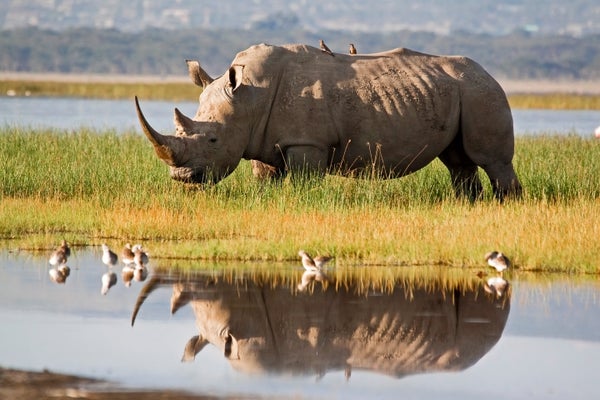
Rhinos’ evolutionary relationships became a little clearer with the sequencing of the oldest proteins yet.
WLDavies/Getty Images
Ewen Callaway is a senior reporter at Nature.
First published in 1869, Nature is the world's leading multidisciplinary science journal. Nature publishes the finest peer-reviewed research that drives ground-breaking discovery, and is read by thought-leaders and decision-makers around the world.
html Ewen Callaway; Nature magazine 1752098400 Four New Autism Subtypes Link Genes to Children's Traits https://www.scientificamerican.com/article/four-new-autism-subtypes-link-genes-to-childrens-traits/Autism has at least four subtypes, an analysis of more than 5,000 children’s genes, traits and developmental trajectories has shown
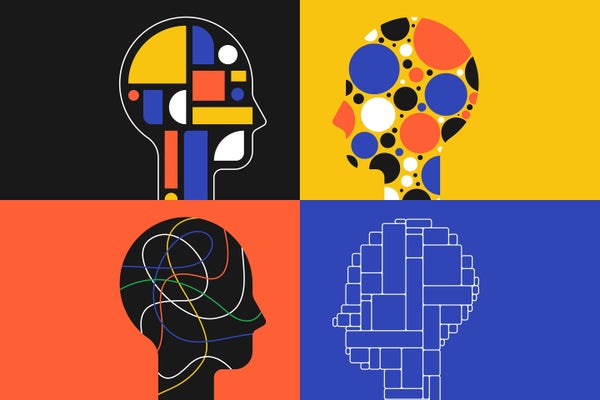
Muharrem Huner/Getty Images
Allison Parshall is an associate editor at Scientific American covering mind and brain. She writes the magazine's Contributors column and weekly online Science Quizzes. As a multimedia journalist, she contributes to Scientific American's podcast Science Quickly. Parshall's work has also appeared in Quanta Magazine and Inverse. She graduated from New York University's Arthur L. Carter Journalism Institute with a master's degree in science, health and environmental reporting. She has a bachelor's degree in psychology from Georgetown University.
html Allison Parshall; Jeanna Bryner 1752098400 Can AI Replace Air Traffic Controllers to Reduce Airline Accidents? https://www.scientificamerican.com/article/can-ai-replace-air-traffic-controllers-to-reduce-airline-accidents/Tests in London and Singapore could reveal whether AI can improve the safety of air travel

Airbus A340 at Heathrow airport.
stonefaction photography/Getty Images
Adrienne Bernhard is a journalist whose work appears in BBC Future, Popular Mechanics, the Atlantic, the Economist, Foreign Policy and the Wall Street Journal. She writes about technology, the environment, culture and mathematics.
html Adrienne Bernhard; Mark Fischetti 1752098400 Attacks on Higher Education Are Attacks on All Americans https://www.scientificamerican.com/article/attacks-on-higher-education-are-attacks-on-all-americans/If Americans don’t fight back against efforts to dismantle higher education, the U.S. will lose lifesaving medical research, innovation that spurs our economy and the ability to freely study science and society

The John W. Weeks Bridge at Harvard University in Cambridge, Massachusetts.
joe daniel price
Matt Motta is an assistant professor in the department of health law, policy, and management at the Boston University School of Public Health, and a faculty affiliate at the Center for Health Communication at the TH Chan School of Public Health at Harvard University. His research aims to assess the prevalence, causes and policy impact of antiscience attitudes, and to devise strategic communication campaigns aimed at improving trust in science.
Dominik Stecuła is an assistant professor of Communication and Political Science at The Ohio State University. His research focuses on political and science communication, and how the information environment shapes people’s beliefs.
html Matt Motta; Dominik Stecuła 1752098400 Extreme Heat Endangers AI Data Centers https://www.scientificamerican.com/article/extreme-heat-endangers-ai-data-centers/A new analysis warns that AI facilities could be forced to stop operating because of water shortages and blackouts
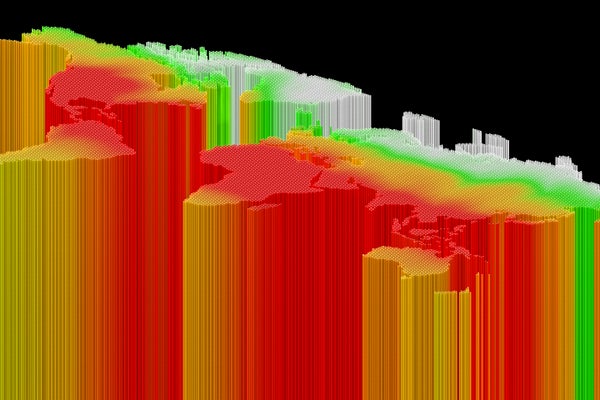
Christoph Burgstedt/Science Photo Library/Getty Images
Sara Schonhardt covers climate and energy developments globally, with a focus on international climate negotiations, finance and how countries are approaching the transition to cleaner economies. Prior to joining E&E News, Sara worked as a reporter for more than a decade across much of Southeast Asia, with stints for The New York Times, Christian Science Monitor and Voice of America. She was a staff reporter for The Wall Street Journal in Indonesia until 2017. Sara has a degree in journalism from Ohio University and a master's degree in international affairs from Columbia University.
E&E News provides essential energy and environment news for professionals.
html Sara Schonhardt; E&E News 1752098400 Nanoplastics Make Up Most of the Ocean’s Plastic Pollution https://www.scientificamerican.com/article/nanoplastics-make-up-most-of-the-oceans-plastic-pollution/Nanoplastics—particles smaller than a human hair—can pass through cell walls and enter the food web. New research suggest 27 million metric tons of nanoplastics are spread across just the top layer of the North Atlantic
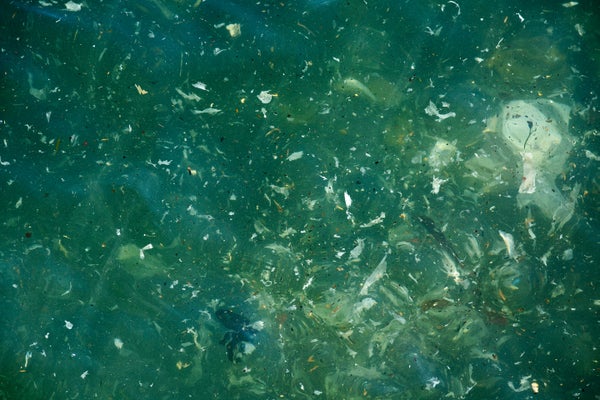
Sergi Escribano/Getty Images
Katharine Sanderson is a freelance journalist based in Cornwall, UK.
First published in 1869, Nature is the world's leading multidisciplinary science journal. Nature publishes the finest peer-reviewed research that drives ground-breaking discovery, and is read by thought-leaders and decision-makers around the world.
html Katharine Sanderson; Nature magazine 1752098400 Trump Names Transportation Secretary Sean Duffy as Interim NASA Chief https://www.scientificamerican.com/article/trump-names-transportation-secretary-sean-duffy-as-interim-nasa-chief/The selection of Secretary of Transportation Sean Duffy to temporarily lead NASA adds to the deep political uncertainties already facing the space agency

Sean Duffy, U.S. secretary of transportation, during a news conference in Washington, D.C., on June 12, 2025.
Eric Lee/Bloomberg via Getty Images
Josh Dinner is Space.com's content manager. He is also a freelance writer, photographer and videographer covering space exploration, human spaceflight and other subjects. He has covered everything from rocket launches and NASA's Artemis 1 Space Launch System megarocket to SpaceX astronaut launches for NASA.
SPACE.com is the premier source of space exploration, innovation and astronomy news, chronicling (and celebrating) humanity's ongoing expansion across the final frontier.
html Josh Dinner; SPACE.com 1752098400 How and Why Humans Began to Sing, a Musicology and Neuroscience Perspective https://www.scientificamerican.com/podcast/episode/how-and-why-humans-began-to-sing-a-musicology-and-neuroscience-perspective/Musicologists and neuroscientists have been trying to understand what turns speech into music.
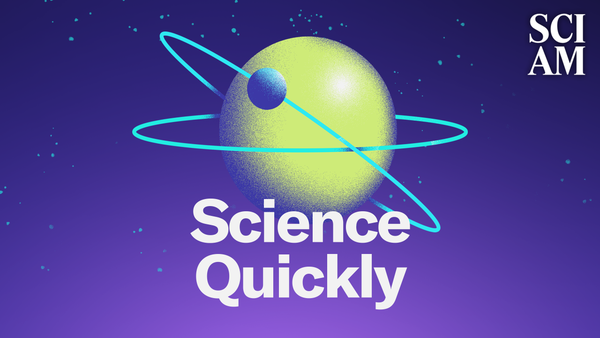
Anaissa Ruiz Tejada/Scientific American
Rachel Feltman is former executive editor of Popular Science and forever host of the podcast The Weirdest Thing I Learned This Week. She previously founded the blog Speaking of Science for the Washington Post.
Allison Parshall is an associate editor at Scientific American covering mind and brain. She writes the magazine's Contributors column and weekly online Science Quizzes. As a multimedia journalist, she contributes to Scientific American's podcast Science Quickly. Parshall's work has also appeared in Quanta Magazine and Inverse. She graduated from New York University's Arthur L. Carter Journalism Institute with a master's degree in science, health and environmental reporting. She has a bachelor's degree in psychology from Georgetown University.
Fonda Mwangi is a multimedia editor at Scientific American. She previously worked as an audio producer at Axios, The Recount and WTOP News. She holds a master’s degree in journalism and public affairs from American University in Washington, D.C.
Madison Goldberg is a science journalist and audio producer based in New York City. She holds a bachelor's degree in Earth and Planetary Sciences from Harvard University and a master's degree from New York University's Science, Health and Environmental Reporting Program. Her work has also appeared in Quanta Magazine, the NPR project StateImpact Pennsylvania and elsewhere.
html Rachel Feltman; Allison Parshall; Fonda Mwangi; Madison Goldberg 1752098400 Water on Mars Probably Doesn’t Explain These Weird Streaks https://www.scientificamerican.com/article/water-on-mars-probably-doesnt-explain-these-weird-streaks/A new global overview of Mars suggests dust, rather than water, is the source of mysterious streaks there
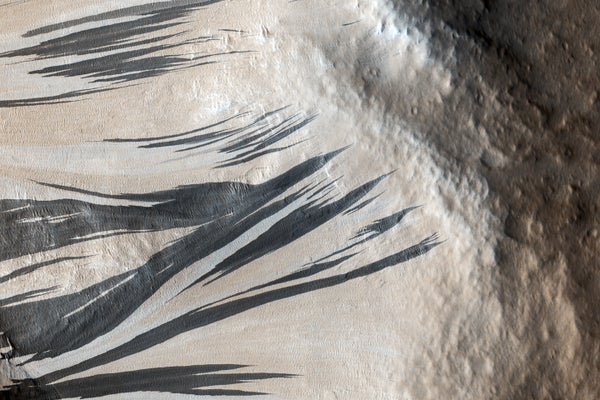
Dark “slope streaks,” likely resulting from dust avalanches, stretch across an area of Mars called Acheron Fossae in this image from the High-Resolution Imaging Science Experiment (HiRISE) camera aboard NASA’s Mars Reconnaissance Orbiter.
NASA/JPL-Caltech/University of Arizona
Phil Plait is a professional astronomer and science communicator in Virginia. His column for Scientific American, The Universe, covers all things space. He writes the Bad Astronomy Newsletter. Follow him online.
html Phil Plait; Lee Billings 1752012000 ‘Science Fair’ of Lost Research Protests Trump Cuts https://www.scientificamerican.com/article/science-fair-of-lost-research-protests-trump-cuts/A protest at a congressional office building highlighted future research findings that vast cuts to science will erase

Dkfielding/Getty Images
Jenna Ahart is a science journalist specializing in the physical sciences.
First published in 1869, Nature is the world's leading multidisciplinary science journal. Nature publishes the finest peer-reviewed research that drives ground-breaking discovery, and is read by thought-leaders and decision-makers around the world.
html Jenna Ahart; Nature magazine 1752012000 Texas Floods Were a Known Risk, but Little Has Been Done for Protection https://www.scientificamerican.com/article/texas-floods-were-a-known-risk-but-little-has-been-done-for-protection/Texas has identified more than $50 billion in flood control needs, but lawmakers have devoted just $1.4 billion to address them
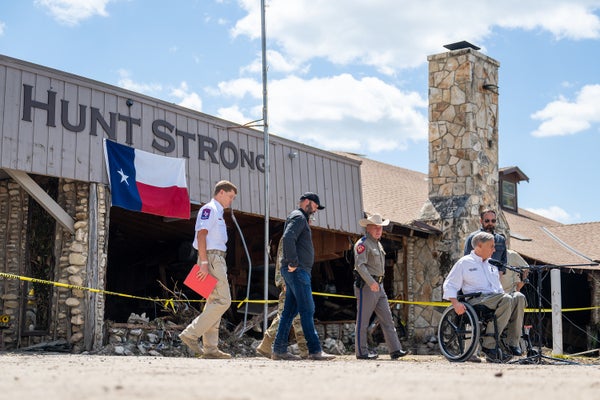
Gov. Greg Abbott arrives at a news conference on July 08, 2025 in Hunt, Texas. Gov. Abbott announced that more than 160 people are still missing after deadly floods early Friday. Last week, heavy rainfall caused severe flash flooding along the Guadalupe River in central Texas, leaving more than 100 people reported dead, including children attending Camp Mystic.
Brandon Bell/Getty Images
Mike Lee is a reporter for E&E News.
Thomas Frank covers the federal response to climate change for E&E News.
Chelsea Harvey covers climate science for Climatewire. She tracks the big questions being asked by researchers and explains what's known, and what needs to be, about global temperatures. Chelsea began writing about climate science in 2014. Her work has appeared in The Washington Post, Popular Science, Men's Journal and others.
E&E News provides essential energy and environment news for professionals.
html Mike Lee; Thomas Frank; Chelsea Harvey; E&E News 1752012000 Japan’s New Undersea Earthquake Detection System Will Improve Tsunami Prediction https://www.scientificamerican.com/article/japans-new-undersea-earthquake-detection-system-will-improve-tsunami/Japan’s new earthquake-detection network lengthens warning times, and researchers in Wales have harnessed nuclear blast detectors to gauge tsunami risks. But the U.S. lags in monitoring the massive Cascadia megathrust fault
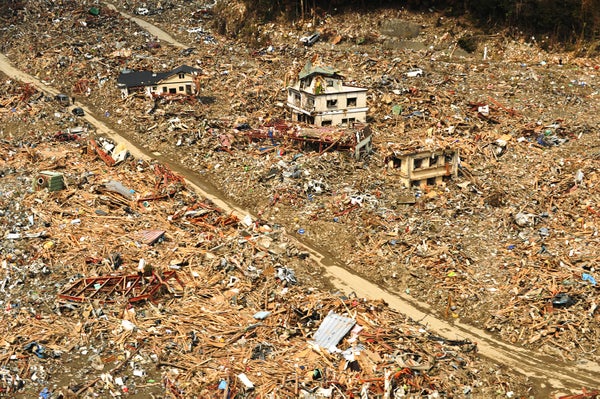
Aerial view of the devastated along the north eastern coast of Japan following a massive earthquake and tsunami March 25, 2011.
DOD Photo/Alamy Stock Photo
Deni Ellis Béchard is Scientific American’s senior tech reporter. He is author of 10 books and has received a Commonwealth Writers’ Prize, a Midwest Book Award and a Nautilus Book Award for investigative journalism. He holds two master’s degrees in literature, as well as a master’s degree in biology from Harvard University. His most recent novel, We Are Dreams in the Eternal Machine, explores the ways that artificial intelligence could transform humanity. You can follow him on X, Instagram and Bluesky @denibechard.
html Deni Ellis Béchard; Dean Visser 1752012000 ChatGPT and Gemini AIs Have Uniquely Different Writing Styles https://www.scientificamerican.com/article/chatgpt-and-gemini-ai-have-uniquely-different-writing-styles/ChatGPT and Gemini AI write in different idioms, linguists find

Miakievy/Getty Images
Karolina Rudnicka is a linguist at the University of Gdańsk in Poland. She researches language variation and change, especially under the influence of new technologies and across time.
html Karolina Rudnicka; Madhusree Mukerjee 1751925600 Tracking Coral Reef Health with Bioacoustics https://www.scientificamerican.com/podcast/episode/tracking-coral-reef-health-with-bioacoustics/The underwater world relies on sound signals—so what happens when a noisy reef falls silent?
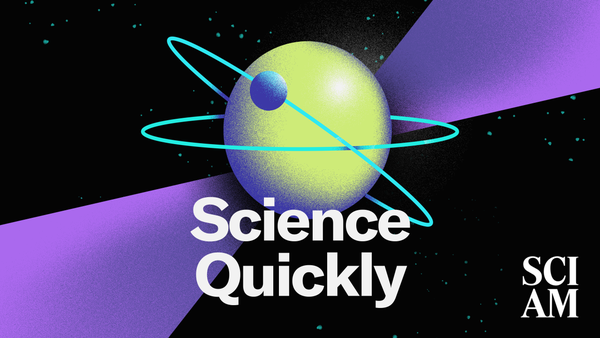
Anaissa Ruiz Tejada/Scientific American
Rachel Feltman is former executive editor of Popular Science and forever host of the podcast The Weirdest Thing I Learned This Week. She previously founded the blog Speaking of Science for the Washington Post.
Fonda Mwangi is a multimedia editor at Scientific American. She previously worked as an audio producer at Axios, The Recount and WTOP News. She holds a master’s degree in journalism and public affairs from American University in Washington, D.C.
Jeffery DelViscio is currently chief multimedia editor/executive producer at Scientific American. He is former director of multimedia at STAT, where he oversaw all visual, audio and interactive journalism. Before that he spent more than eight years at the New York Times, where he worked on five different desks across the paper. He holds dual master's degrees in journalism and in Earth and environmental sciences from Columbia University. He has worked onboard oceanographic research vessels and tracked money and politics in science from Washington, D.C. He was a Knight Science Journalism Fellow at the Massachusetts Institute of Technology in 2018. His work has won numerous awards, including two News and Documentary Emmy Awards.
html Rachel Feltman; Fonda Mwangi; Jeffery DelViscio 1751925600 Flood Forecasts in Texas and Beyond Could Worsen with Trump NWS Cuts https://www.scientificamerican.com/article/flood-forecasts-in-texas-and-beyond-could-worsen-with-trump-nws-cuts/Forecasts and warnings largely worked during the recent flooding catastrophe in Texas. Those systems are expected to degrade as President Donald Trump’s cuts to the National Weather Service, satellites and other key services take hold
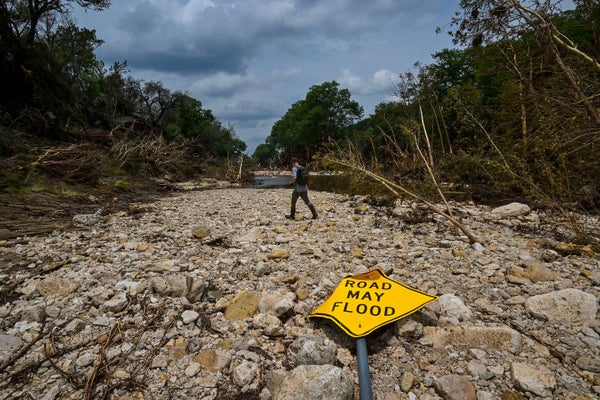
Search and rescue personnel continue to look for missing people along the Guadalupe River on July 7, 2025 in Hunt, Texas. As of July 8, at least 108 people have died in the Central Texas floods, including 28 children, and dozens of people are still unaccounted for due to the quick moving flash flood.
Joshua Lott/The Washington Post via Getty Images
Scott Waldman is a reporter for E&E News.
Chelsea Harvey covers climate science for Climatewire. She tracks the big questions being asked by researchers and explains what's known, and what needs to be, about global temperatures. Chelsea began writing about climate science in 2014. Her work has appeared in The Washington Post, Popular Science, Men's Journal and others.
E&E News provides essential energy and environment news for professionals.
html Scott Waldman; Chelsea Harvey; E&E News 1751925600 Science Makes the U.S. a Great Nation https://www.scientificamerican.com/article/science-makes-the-u-s-a-great-nation/History tells us what happens when great nations attack science

Engraving of the death of Archimedes.
mikroman6
Paul M. Sutter is a cosmologist at Johns Hopkins University, as well as an author, television host and U.S. cultural ambassador.
html Paul M. Sutter 1751925600 Cutting-Edge Physics and Chemistry Now Unfold One Attosecond at a Time https://www.scientificamerican.com/article/cutting-edge-physics-and-chemistry-now-unfold-one-attosecond-at-a-time/An attosecond—or 0.000000000000000001 second—is no time at all for a person. That is not so for electrons, atoms and molecules, and laser-wielding scientists are revealing the action

Sergei Krestinin/Getty Images
Ivan Amato is a science and technology writer, editor, communicator, podcaster, public-engagement professional and crystal photomicrographer.
html Ivan Amato; Knowable Magazine 1751839200 Pulsing Magma in Earth’s Mantle Drives Tectonic Plates Tearing Africa Apart https://www.scientificamerican.com/article/pulsing-magma-in-earths-mantle-drives-tectonic-plates-tearing-africa-apart/Chemical fingerprints from volcanic rock offer hints of what’s happening in the mantle below the area where three rift zones meet in East Africa
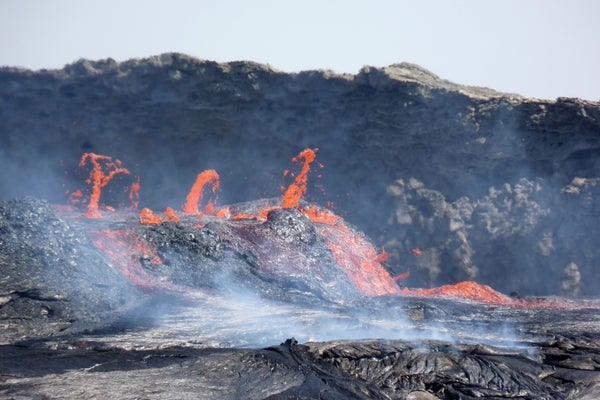
Active lava flows spilling out of the Erta Ale volcano in Afar, Ethiopia.
Dr. Derek Keir, University of Southampton/University of Florence
Nora Bradford is the current news intern at Scientific American, a freelance science writer and a Ph.D. student in cognitive science. Follow Bradford on Blusky @norabradford.bsky.social
html Nora Bradford; Andrea Thompson 1751839200 Texas Flood Forecasts Were Accurate but Not Sufficient to Save Lives https://www.scientificamerican.com/article/texas-flood-forecasts-were-accurate/The National Weather Service issued timely alerts, meteorologists say, but few were listening in the hours before the early-morning flash floods along the Guadalupe River
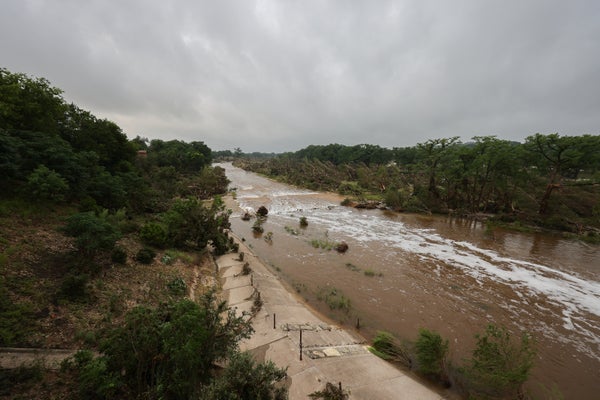
Widespread damage is visible in and around Kerrville, Texas, on July 6, 2025, following a deadly flash flood that caused the Guadalupe River to rise 26 feet in less than an hour.
Reginald Mathalone/NurPhoto via Getty Images
Chelsea Harvey covers climate science for Climatewire. She tracks the big questions being asked by researchers and explains what's known, and what needs to be, about global temperatures. Chelsea began writing about climate science in 2014. Her work has appeared in The Washington Post, Popular Science, Men's Journal and others.
E&E News provides essential energy and environment news for professionals.
html Chelsea Harvey; E&E News 1751839200 Addiction Risk Shows up in Children’s Brain Scans before Drug Use Starts https://www.scientificamerican.com/article/addiction-risk-shows-up-in-childrens-brain-scans-before-drug-use-starts/Brain differences in children and teens who experiment with drugs early show up before they take their first puff or sip
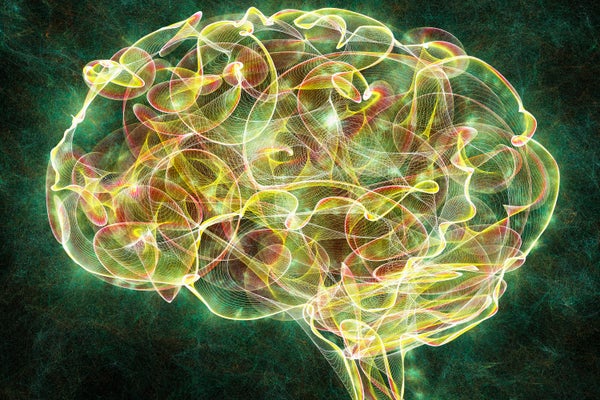
Mehau Kulyk/Science Photo Library/Getty Images
Maia Szalavitz is the author of, most recently, Undoing Drugs: How Harm Reduction Is Changing the Future of Drugs and Addiction (Hachette Books, 2021). She is a contributing opinion writer for the New York Times and author or co-author of seven other books.
html Maia Szalavitz; Allison Parshall 1751839200 Why Did Texas Flash Flood Waters Rise So Quickly? https://www.scientificamerican.com/article/why-did-texas-flash-flood-waters-rise-so-quickly/Flash floods happen when heavy rains unleash more water than the ground can absorb, causing that water to pile up and flow to low-lying areas
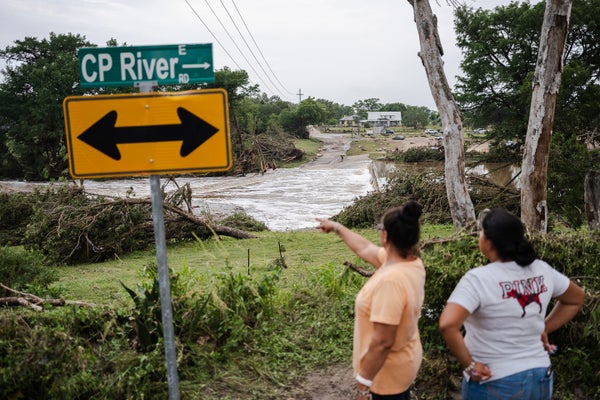
Two women survey the damage caused by flash flooding on the bank Guadalupe River in Center Point, Tex., on July 5, 2025. Heavy rainfall caused flooding along the Guadalupe River in central Texas, with multiple fatalities reported.
Jim Vondruska/Getty Images
Andrea Thompson is an associate editor covering the environment, energy and earth sciences. She has been covering these issues for 16 years. Prior to joining Scientific American, she was a senior writer covering climate science at Climate Central and a reporter and editor at Live Science, where she primarily covered earth science and the environment. She has moderated panels, including as part of the United Nations Sustainable Development Media Zone, and appeared in radio and television interviews on major networks. She holds a graduate degree in science, health and environmental reporting from New York University, as well as a B.S. and an M.S. in atmospheric chemistry from the Georgia Institute of Technology. Follow Thompson on Bluesky @andreatweather.bsky.social
html Andrea Thompson; Jeanna Bryner 1751839200 The Benefits of Raising Conscientious Kids https://www.scientificamerican.com/article/the-benefits-of-raising-conscientious-kids/Being conscientious will serve kids in the long run. Here are some tips to help them learn that trait
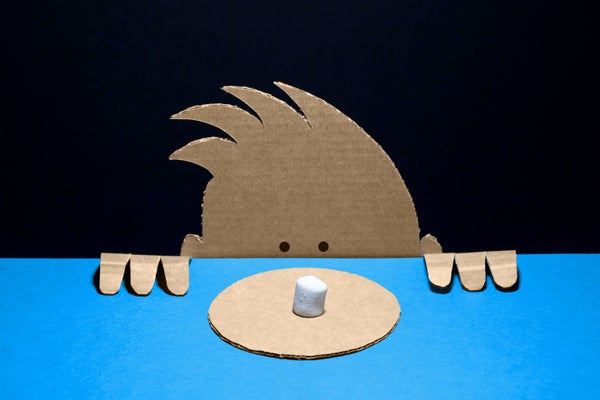
Boris Zhitkov/Alamy Stock Photo
Jasmine Mote is a licensed clinical psychologist and research assistant professor at Sargent College of Health and Rehabilitation Sciences at Boston University. She received her Ph.D. from the University of California, Berkeley. She also writes Mental Healthy, a newsletter on mental health science on pregnancy, parenting and everything in between. You can follow her on Bluesky @jmote.bsky.social.
html Jasmine Mote; Megha Satyanarayana 1751839200 Why Texas ‘Flash Flood Alley’ Is So Deadly, Explained by Geology https://www.scientificamerican.com/article/why-texas-flash-flood-alley-is-so-deadly-explained-by-geology/A hydrologist explains why Texas Hill Country is known as Flash Flood Alley and how its geography and geology can lead to heavy downpours and sudden, destructive floods
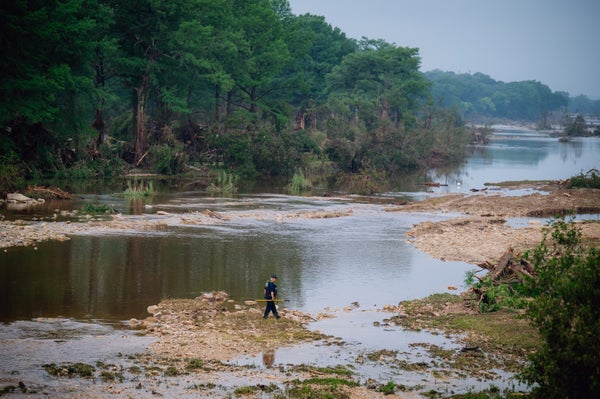
A man conducts a search near the Guadalupe River in Kerrville, Texas on Sunday, July 6, 2025. Devastating floods swept through Central Texas on Thursday evening and Friday morning, raising the death toll to 51 and countless more who remain missing, including 27 girls from Camp Mystic.
Desiree Rios for The Washington Post via Getty Images
Hatim Sharif is a professor of civil and environmental engineering at the University of Texas at San Antonio.
Curated by professional editors, The Conversation offers informed commentary and debate on the issues affecting our world.
html Hatim Sharif; The Conversation US 1751839200 Gut Microbe Deficiency in U.S. Babies Tied to Asthma, Allergies, Autoimmune Disorders https://www.scientificamerican.com/article/gut-microbe-deficiency-in-u-s-babies-tied-to-asthma-allergies-autoimmune/Babies lacking in key gut bacteria are at greater risk of developing asthma, allergies or eczema
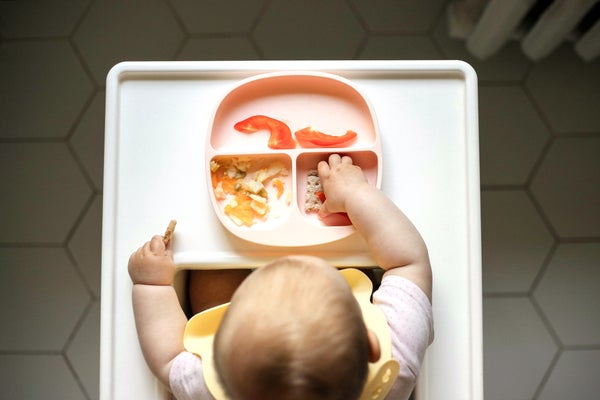
Evgeniia Siiankovskaia/Getty Images
Rachel Nuwer is a science journalist and author. Her latest book is I Feel Love: MDMA and the Quest for Connection in a Fractured World (Bloomsbury, 2023). Follow her on X @RachelNuwer
html Rachel Nuwer; Andrea Gawrylewski 1751752800 Astronaut Matthew Dominick Speaks to Scientific American, Live from the International Space Station https://www.scientificamerican.com/podcast/episode/astronaut-matthew-dominick-speaks-to-scientific-american-live-from-the/We spoke with NASA astronaut Matthew Dominick in an exclusive, first-ever interview from the cupola of the International Space Station.
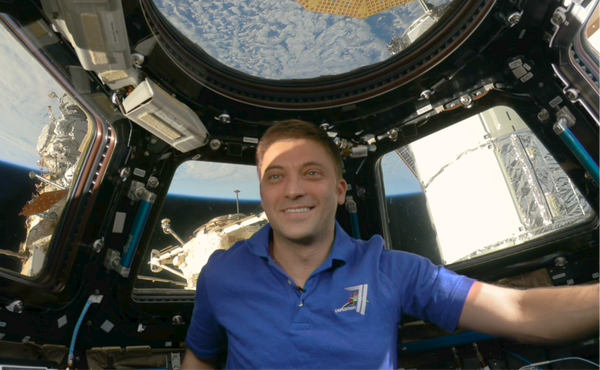
Kelso Harper/Scientific American
Rachel Feltman is former executive editor of Popular Science and forever host of the podcast The Weirdest Thing I Learned This Week. She previously founded the blog Speaking of Science for the Washington Post.
Kelso Harper is an award-winning senior multimedia editor at Scientific American. As a producer, editor and host, they work on short documentaries, social videos and Scientific American’s podcast Science Quickly. They have a bachelor’s degree in chemistry from Johns Hopkins University and a master’s degree in science writing from the Massachusetts Institute of Technology. Previously, they worked with Wired, Science, Popular Mechanics, and MIT News. Follow them on LinkedIn and Instagram.
Fonda Mwangi is a multimedia editor at Scientific American. She previously worked as an audio producer at Axios, The Recount and WTOP News. She holds a master’s degree in journalism and public affairs from American University in Washington, D.C.
Jeffery DelViscio is currently chief multimedia editor/executive producer at Scientific American. He is former director of multimedia at STAT, where he oversaw all visual, audio and interactive journalism. Before that he spent more than eight years at the New York Times, where he worked on five different desks across the paper. He holds dual master's degrees in journalism and in Earth and environmental sciences from Columbia University. He has worked onboard oceanographic research vessels and tracked money and politics in science from Washington, D.C. He was a Knight Science Journalism Fellow at the Massachusetts Institute of Technology in 2018. His work has won numerous awards, including two News and Documentary Emmy Awards.
html Rachel Feltman; Kelso Harper; Fonda Mwangi; Jeffery DelViscio 1751752800 Math’s Block-Stacking Problem Has a Preposterous Solution https://www.scientificamerican.com/article/maths-block-stacking-problem-has-a-preposterous-solution/In principle, this impossible math allows for a glue-free bridge of stacked blocks that can stretch across the Grand Canyon—and into infinity
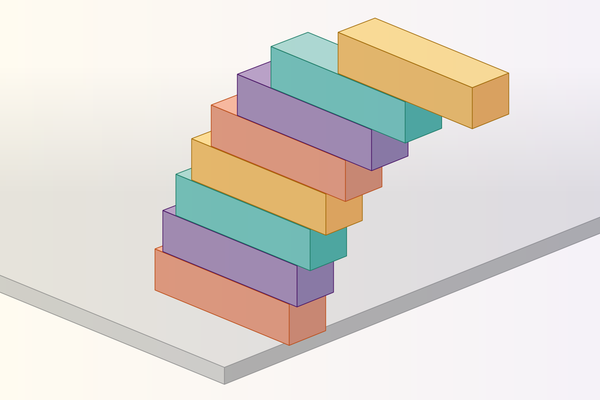
Amanda Montañez
Jack Murtagh is a freelance math writer and puzzle creator. He writes a column on mathematical curiosities for Scientific American and creates daily puzzles for the Morning Brew newsletter. He holds a Ph.D. in theoretical computer science from Harvard University. Follow Jack on X @JackPMurtagh
html Jack Murtagh; Jeanna Bryner 1751580000 Climate Change’s Fingerprints Came Early, a Thought Experiment Reveals https://www.scientificamerican.com/article/climate-changes-fingerprints-came-early-a-thought-experiment-reveals/Climate change left its signature on the atmosphere early in the industrial revolution, reveals a thought experiment investigation
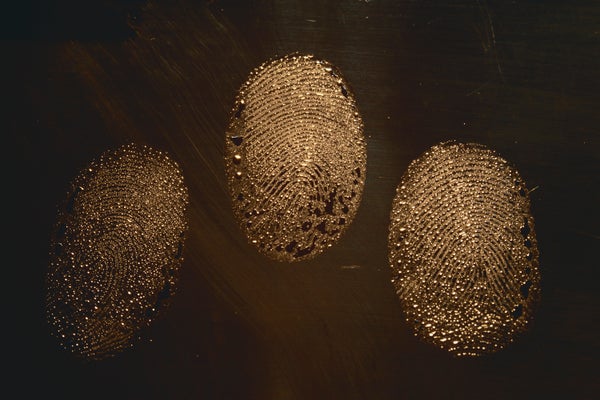
Ashley Cooper/Getty Images
Ben Santer is a climate scientist and John D. and Catherine T. MacArthur fellow, and an author or contributor to all six reports by the Intergovernmental Panel on Climate Change.
Susan Solomon is a professor in Earth, atmospheric and planetary sciences at the Massachusetts Institute of Technology.
David W. J. Thompson is a professor in the department of atmospheric sciences at Colorado State University and in the School of Environmental Sciences at the University of East Anglia.
Qiang Fu is a professor in the department of atmospheric and climate science at the University of Washington.
html Ben Santer; Susan Solomon; David W. J. Thompson; Qiang Fu 1751580000 Workers Have Died in Extreme Heat as OSHA Has Debated Protections https://www.scientificamerican.com/article/workers-have-died-in-extreme-heat-as-osha-has-debated-protections/The June heat dome contributed to the deaths of at least three people. They have died as federal regulators have weighed whether to finalize the nation’s first heat protection rule for workers
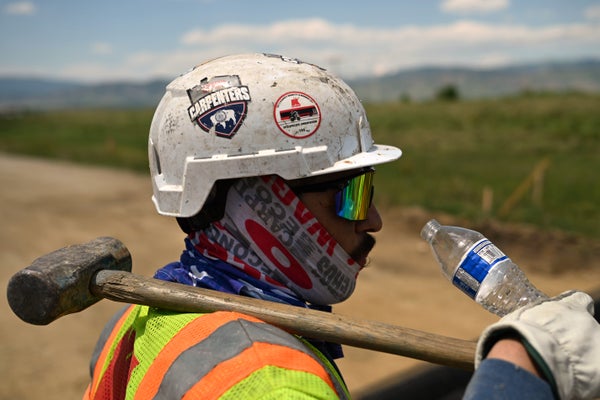
A construction worker drinks water during high 90-degree temperatures on June 20, 2025 in Boulder, CO.
Mark Makela/Getty Images
Ariel Wittenberg is a reporter covering public health for E&E News.
E&E News provides essential energy and environment news for professionals.
html Ariel Wittenberg; E&E News 1751580000 Human Gut Bacteria Can Gather Up PFAS ‘Forever Chemicals’ https://www.scientificamerican.com/article/human-gut-bacteria-can-gather-up-pfas-forever-chemicals/When tested on their own and in mice, these bacterial strains from the human microbiome show promise in accumulating PFAS
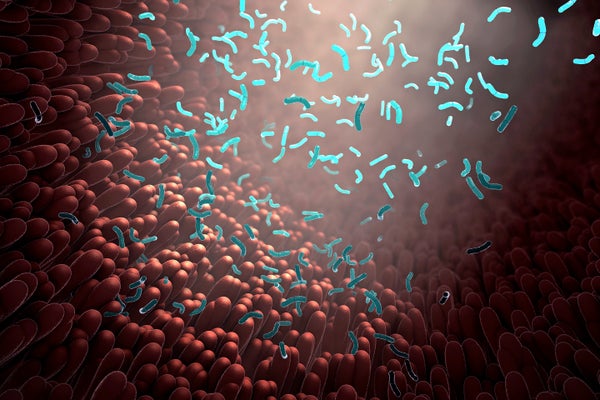
Gut microbiome bacteria from humans can absorb PFA.
Christoph Burgstedt/Science Source
Nora Bradford is the current news intern at Scientific American, a freelance science writer and a Ph.D. student in cognitive science. Follow Bradford on Blusky @norabradford.bsky.social
html Nora Bradford; Sarah Lewin Frasier 1751493600 How Trump’s Federal Funding Cuts Are Hurting Early-Career Researchers and American Health https://www.scientificamerican.com/article/how-trumps-federal-funding-cuts-are-hurting-early-career-researchers-and/Canceled grants and slashed budgets are disproportionately affecting junior health researchers, dealing a major blow to the future of science and society in the U.S.
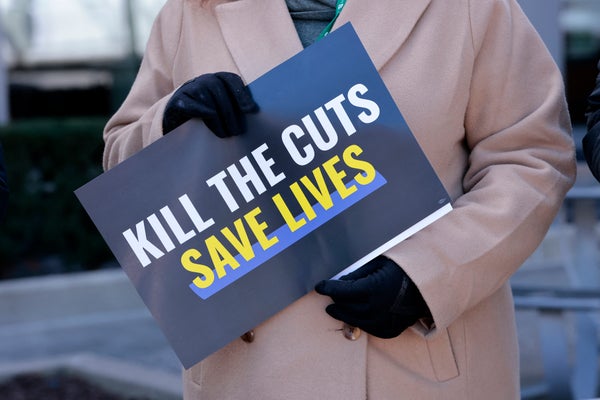
People rally during a “Kill the Cuts” protest against U.S. President Donald Trump's funding cuts on research, health and higher education in Detroit, Mich., on April 8, 2025.
Jeff Kowalsky/AFP via Getty Images
Rachel Nuwer is a science journalist and author. Her latest book is I Feel Love: MDMA and the Quest for Connection in a Fractured World (Bloomsbury, 2023). Follow her on X @RachelNuwer
html Rachel Nuwer; Lauren J. Young 1751493600 Republicans’ One Big Beautiful Bill Act Will Raise U.S. Climate Emissions https://www.scientificamerican.com/article/republicans-one-big-beautiful-bill-act-will-raise-u-s-climate-emissions/Four research firms project that the Republicans’ One Big Beautiful Bill Act will raise greenhouse gas emissions and likely put U.S. and global climate goals out of reach
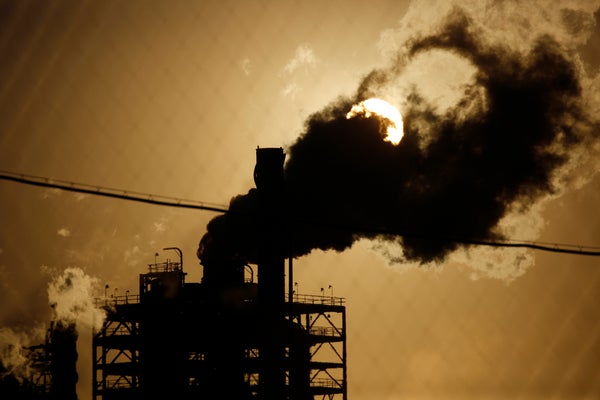
Luke Sharrett/Bloomberg/Getty Images
Zack Colman recently became the White House correspondent for E&E News’s Climatewire. A former Knight Science Journalism Fellow at MIT, he has covered energy and environment issues from Washington, D.C., since 2011.
E&E News provides essential energy and environment news for professionals.
html Zack Colman; E&E News 1751493600 New Interstellar Object Comet 3I/ATLAS—What We Know So Far as It Zips through the Solar System https://www.scientificamerican.com/article/new-interstellar-object-comet-3i-atlas-what-we-know-so-far-as-it-zips/All eyes are on Comet 3I/ATLAS as astronomers worldwide chase the exotic ice ball through our solar system
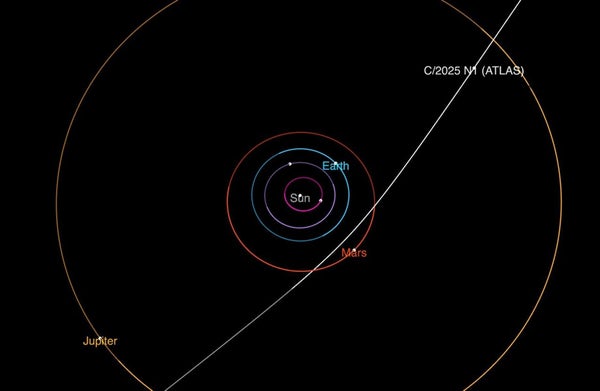
A diagram shows the trajectory of interstellar Comet 3I/ATLAS as it passes through the solar system. It will make its closest approach to the sun in October.
NASA/JPL-Caltech
Nora Bradford is the current news intern at Scientific American, a freelance science writer and a Ph.D. student in cognitive science. Follow Bradford on Blusky @norabradford.bsky.social
html Nora Bradford; Lee Billings 1751493600 How Massive Medicaid Cuts Will Harm People’s Health https://www.scientificamerican.com/article/how-massive-medicaid-cuts-will-harm-peoples-health/Evidence shows that Medicaid improves people’s health and is particularly vital for babies, older people in need of long-term care and people in rural communities
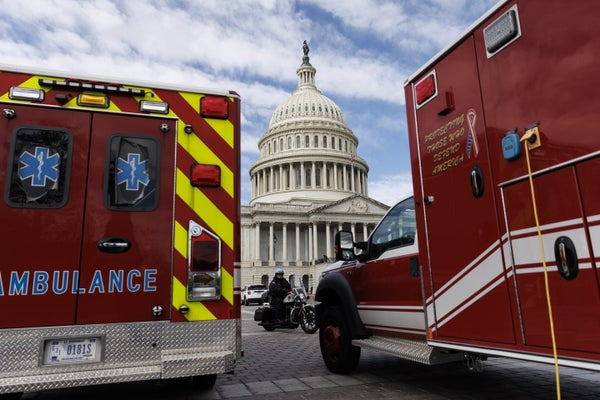
Ting Shen/Bloomberg via Getty Images
Meghan Bartels is a science journalist based in New York City. She joined Scientific American in 2023 and is now a senior news reporter there. Previously, she spent more than four years as a writer and editor at Space.com, as well as nearly a year as a science reporter at Newsweek, where she focused on space and Earth science. Her writing has also appeared in Audubon, Nautilus, Astronomy and Smithsonian, among other publications. She attended Georgetown University and earned a master’s degree in journalism at New York University’s Science, Health and Environmental Reporting Program.
html Meghan Bartels; Lauren J. Young 1751493600 First Human Genome from Ancient Egypt Sequenced from 4,800-Year-Old Teeth https://www.scientificamerican.com/article/first-human-genome-from-ancient-egypt-sequenced-from-4-800-year-old-teeth/Forty years after the first effort to extract mummy DNA, researchers have finally generated a full genome sequence from an ancient Egyptian, who lived when the earliest pyramids were built
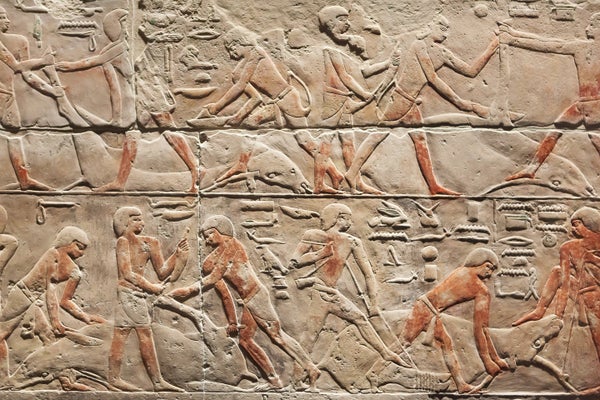
The Ancient Egyptian Old Kingdom (2686–2125 B.C.) produced many lasting artefacts—but little DNA has survived.
Azoor Photo/Alamy Stock Photo
Ewen Callaway is a senior reporter at Nature.
First published in 1869, Nature is the world's leading multidisciplinary science journal. Nature publishes the finest peer-reviewed research that drives ground-breaking discovery, and is read by thought-leaders and decision-makers around the world.
html Ewen Callaway; Nature magazine 1751493600 Proof That Adult Brains Make New Neurons Settles Scientific Controversy https://www.scientificamerican.com/article/proof-that-adult-brains-make-new-neurons-settles-scientific-controversy/Adult brains grow new neurons, and scientists have finally pinpointed where they come from

Neural precursor cells (green) have been difficult to identify in human brains.
Carol N. Ibe and Eugene O. Major/National Institutes of Health/Science Source
Nora Bradford is the current news intern at Scientific American, a freelance science writer and a Ph.D. student in cognitive science. Follow Bradford on Blusky @norabradford.bsky.social
html Nora Bradford; Allison Parshall 1751493600 Can Life Survive the Death of the Sun? https://www.scientificamerican.com/article/can-life-survive-the-death-of-the-sun/The future is bright—too bright—for life as we know it once the sun transforms into a red giant star
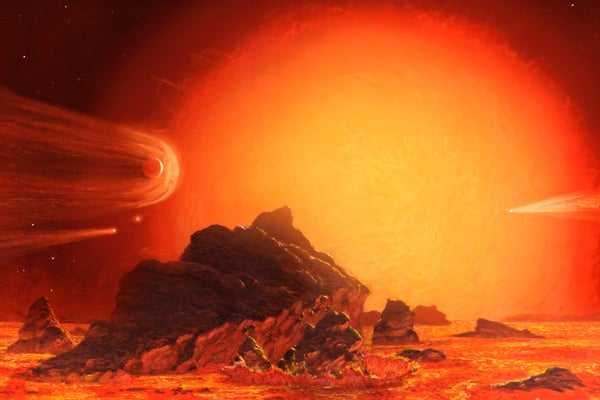
An artist’s impression of the far-future sun, swollen to become a red giant star, as seen from a molten Earth landscape.
Chris Butler/Science Source
Phil Plait is a professional astronomer and science communicator in Virginia. His column for Scientific American, The Universe, covers all things space. He writes the Bad Astronomy Newsletter. Follow him online.
html Phil Plait; Lee Billings 1751407200 Record-Breaking Results Bring Fusion Power Closer to Reality https://www.scientificamerican.com/article/record-breaking-results-bring-fusion-power-closer-to-reality/Breakthroughs from two rival experiments, Germany’s Wendelstein 7-X and the Joint European Torus, suggest the elusive dream of controlled nuclear fusion may be within reach
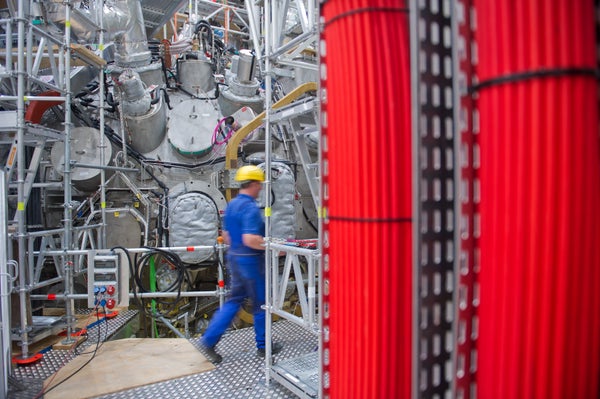
A view of the Wendelstein 7-X fusion reactor, as seen on September 18, 2015, at the Max Planck Institute for Plasma Physics in Greifswald, Germany.
Stefan Sauer/DPA/AFP via Getty Images
Tom Metcalfe is a freelance journalist who is based in London. Metcalfe writes mainly about science, space, archaeology, Earth and the oceans. He has also written for Live Science, the BBC, NBC News, National Geographic, Air & Space and many others.
html Tom Metcalfe; Lee Billings 1751407200 AI Could Help Save Patients from Extreme Heat https://www.scientificamerican.com/article/ai-could-help-save-patients-from-extreme-heat/AI could be used to comb through electronic health records and warn vulnerable people about dangerous heat waves

Tourists try to escape the effects of a heat wave in Washington, D.C., last week.
Andrew Harnik/Getty Images
Ariel Wittenberg is a reporter covering public health for E&E News.
E&E News provides essential energy and environment news for professionals.
html Ariel Wittenberg; E&E News 1751407200 Astronomers Found the Most Self-Destructive Planet in the Sky https://www.scientificamerican.com/article/astronomers-found-the-most-self-destructive-planet-in-the-sky/This planet triggers flares on its star—spelling its ultimate doom
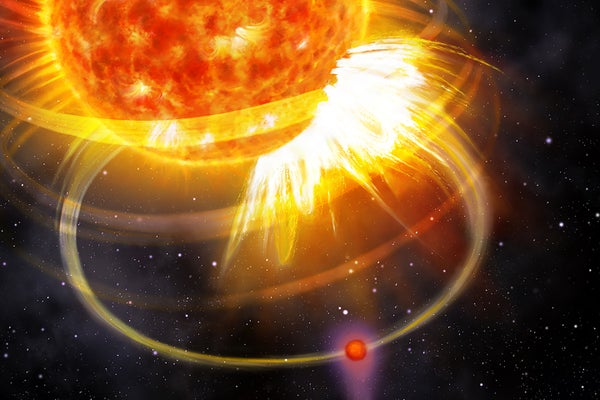
In this artist’s impression, the planet HIP 67522 b sends a wave of energy along magnetic field lines toward the surface of its host star—triggering a massive flare when the energy reaches the star’s surface.
Danielle Futselaar
Jacek Krywko is a freelance writer who covers space exploration, artificial intelligence, computer science and all sorts of engineering wizardry.
html Jacek Krywko; Sarah Lewin Frasier 1751407200 For Dolphins, Echolocation May Be More Like ‘Touching’ Than ‘Seeing’ https://www.scientificamerican.com/article/for-dolphins-echolocation-may-be-more-like-touching-than-seeing/Dolphins seem to “feel” their way across the sea with narrow, sweeping beams of sonar
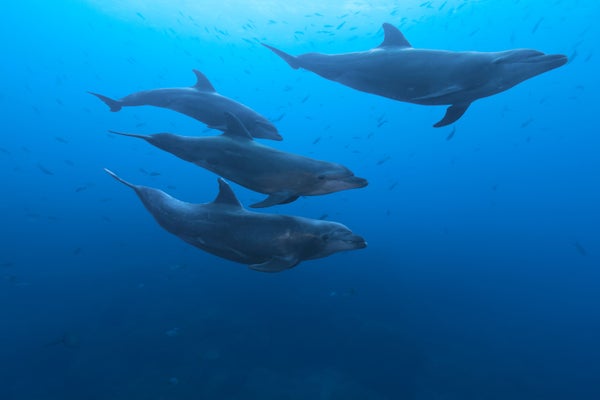
A pod of bottlenose dolphins (Tursiops truncatus) swimming at the Las Cuevitas dive site in the Revillagigedo Archipelago.
Chris A Crumley/Alamy Stock Photo
Cody Cottier is a freelance journalist based in Fort Collins, Colo.
html Cody Cottier; Sarah Lewin Frasier 1751320800 China’s Tianwen-3 Mission Could Beat the U.S. in the Race to Grab Mars Rocks https://www.scientificamerican.com/article/chinas-tianwen-3-mission-could-beat-the-u-s-in-the-race-to-grab-mars-rocks/Launching in 2028, China’s Tianwen-3 Mars sample return mission could bring Red Planet rocks back to Earth as early as 2031—years ahead of competing U.S.-European efforts
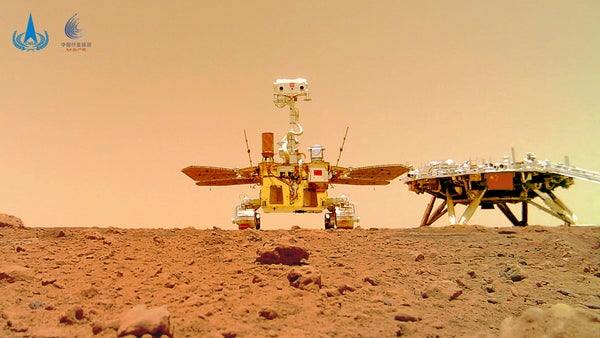
China’s first Mars rover, Zhurong, with its Tianwen-1 landing platform, which touched down on the Red Planet in May 2021. The mission’s success aided China’s development of the more ambitious Tianwen-3, which is a Mars-bound sample-return mission slated to launch in 2028.
Xinhua/Alamy Stock Photo
Andrew Jones is a space journalist specializing in tracking China’s space activities. He also covers topics such as planetary exploration, commercial developments and emerging space powers. Follow him on X @AJ_FI or on Bluesky @AndrewJonesSpace
html Andrew Jones; Lee Billings 1751320800 Could AI Make Drone Shows Less Technically Challenging? https://www.scientificamerican.com/podcast/episode/could-ai-make-drone-shows-less-technically-challenging/AI can allow engineers to focus on artistry over technical details for drone shows

Anaissa Ruiz Tejada/Scientific American
Rachel Feltman is former executive editor of Popular Science and forever host of the podcast The Weirdest Thing I Learned This Week. She previously founded the blog Speaking of Science for the Washington Post.
Jeffery DelViscio is currently chief multimedia editor/executive producer at Scientific American. He is former director of multimedia at STAT, where he oversaw all visual, audio and interactive journalism. Before that he spent more than eight years at the New York Times, where he worked on five different desks across the paper. He holds dual master's degrees in journalism and in Earth and environmental sciences from Columbia University. He has worked onboard oceanographic research vessels and tracked money and politics in science from Washington, D.C. He was a Knight Science Journalism Fellow at the Massachusetts Institute of Technology in 2018. His work has won numerous awards, including two News and Documentary Emmy Awards.
Fonda Mwangi is a multimedia editor at Scientific American. She previously worked as an audio producer at Axios, The Recount and WTOP News. She holds a master’s degree in journalism and public affairs from American University in Washington, D.C.
Alex Sugiura is a Peabody and Pulitzer Prize–winning composer, editor and podcast producer based in Brooklyn, N.Y. He has worked on projects for Bloomberg, Axios, Crooked Media and Spotify, among others.
html Rachel Feltman; Jeffery DelViscio; Fonda Mwangi; Alex Sugiura 1751320800 4 Nonfiction Books Scientific American Recommended In June https://www.scientificamerican.com/article/4-nonfiction-books-scientific-american-recommended-in-june/Here's a collection of exclusive book recommendations, from slithering snakes to a river's impact, for your summer reading lists, curated by Scientific American
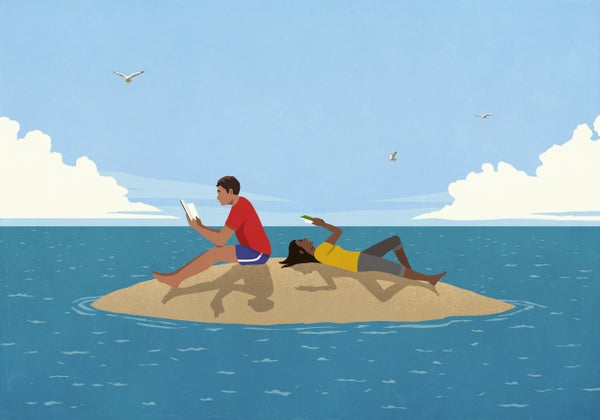
Malte Mueller/Getty Images
Brianne Kane is the editorial workflow and rights manager at Scientific American.
html Brianne Kane; Andrea Gawrylewski 1751320800 U.S. National Climate Assessments Website Goes Dark https://www.scientificamerican.com/article/u-s-national-climate-assessments-website-goes-dark/Links to the U.S.’s most comprehensive climate reports—the National Climate Assessments—disappeared from the Internet on Monday, along with the official government website that houses them
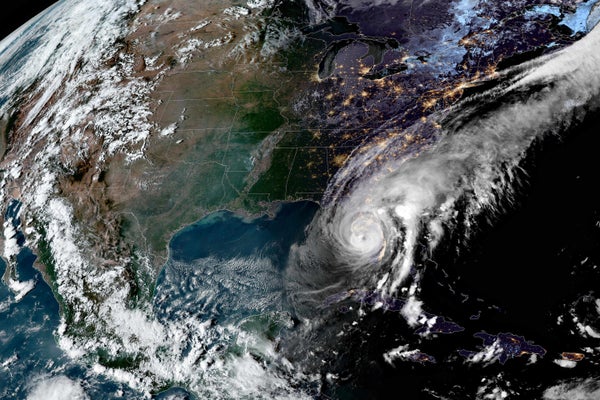
As night falls on the eastern U. S. Hurricane Ian can be seen moving slowly inland after coming ashore near Fort Meyers on the west coast of Florida as a Category 4 dangerous storm on September 28, 2022.
ZUMA Press, Inc./Alamy Stock Photo
Chelsea Harvey covers climate science for Climatewire. She tracks the big questions being asked by researchers and explains what's known, and what needs to be, about global temperatures. Chelsea began writing about climate science in 2014. Her work has appeared in The Washington Post, Popular Science, Men's Journal and others.
E&E News provides essential energy and environment news for professionals.
html Chelsea Harvey; E&E News 1751320800 Could China’s New Ozempic-like Drugs Beat Out Current Weight-Loss Medications? https://www.scientificamerican.com/article/could-chinas-new-ozempic-like-drugs-beat-out-current-weight-loss-medications/GLP-1 drugs currently being tested in China target complications associated with obesity such as heart disease, fatty liver disease and type 2 diabetes
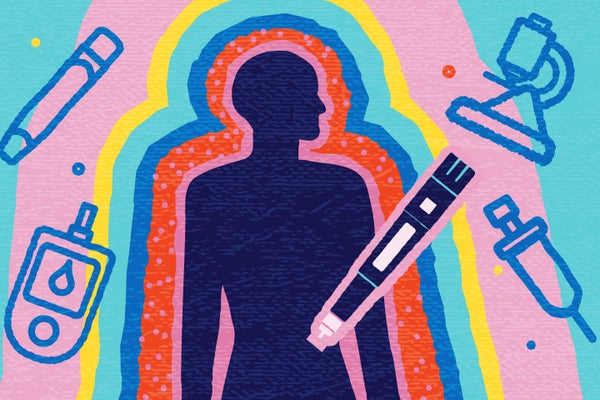
JDawnInk/Getty Images
Rachel Fieldhouse is a reporter for Nature News.
First published in 1869, Nature is the world's leading multidisciplinary science journal. Nature publishes the finest peer-reviewed research that drives ground-breaking discovery, and is read by thought-leaders and decision-makers around the world.
html Rachel Fieldhouse; Nature magazine